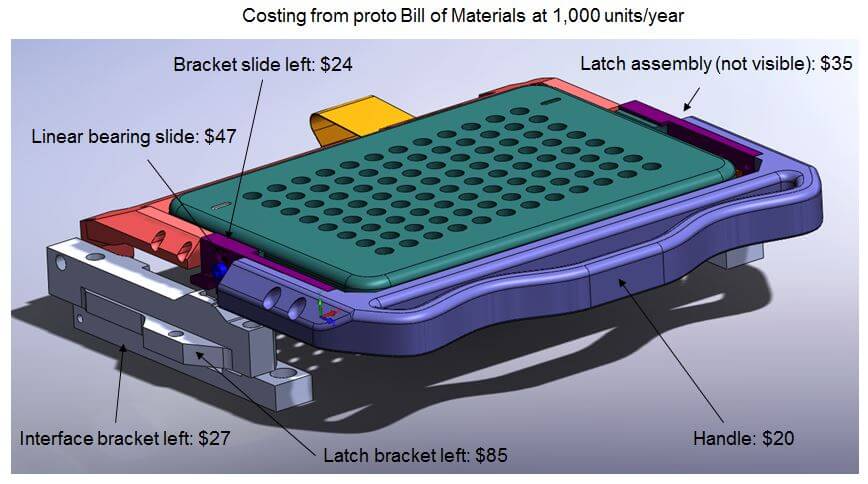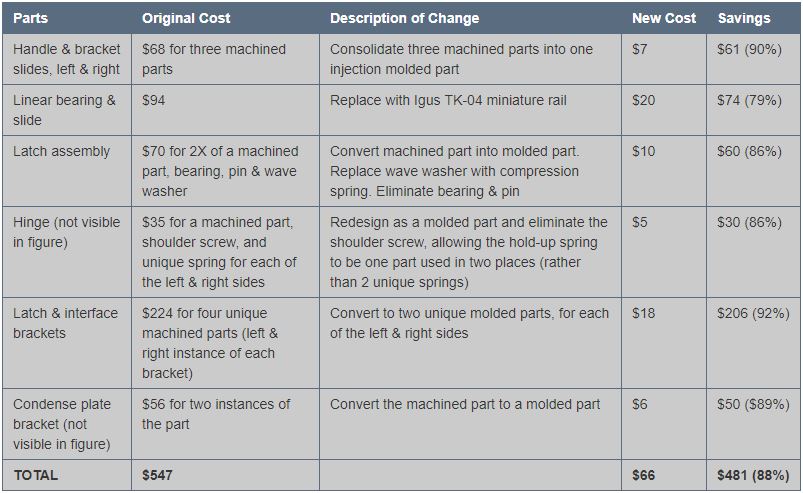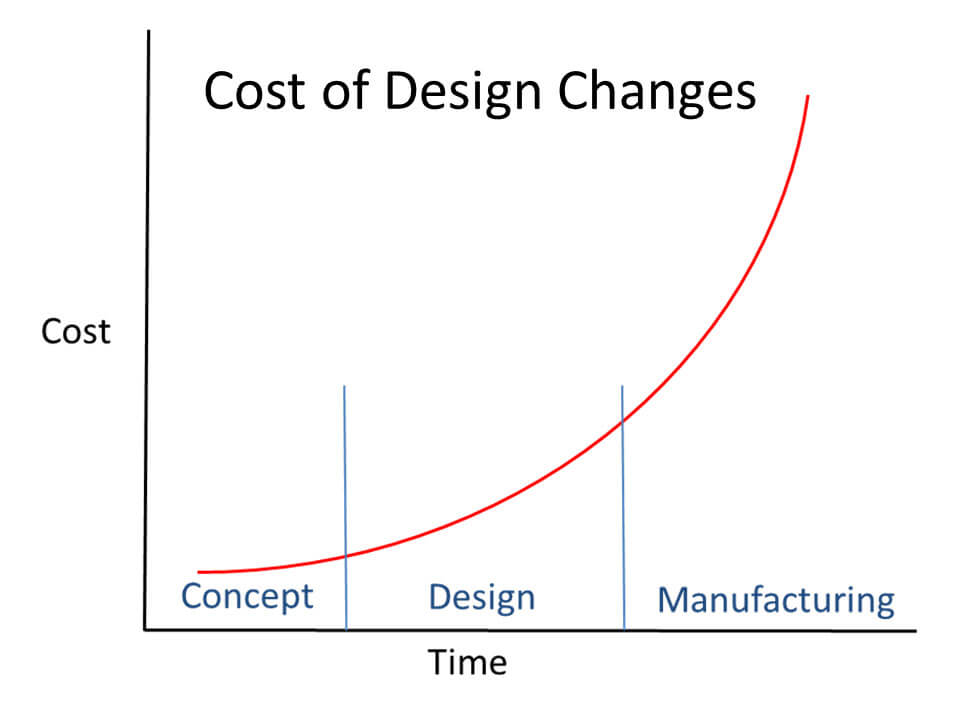On more than one occasion, a company has approached Simplexity to ask if we can “look at this prototype, work out any bugs, and release it for high-volume manufacturing.” While that sounds easy, most times that prototype is neither designed nor ready for high-volume manufacturing.
“Why not? We have one that works, why can’t we just make a hundred thousand of them?”
The key is in understanding design and manufacturing processes. There are some things that you have to bake in from the very start. One of those items is how to design a part for the right manufacturing processes for the volumes that will be built.
EXAMPLE: Stratagene (later acquired by Agilent Technologies) asked Simplexity to review a key subsystem of a scientific instrument (qPCR machine) to see if it was ready to release for manufacturing. The first prototypes were made using machining as the primary manufacturing process. The projected quantities were fairly low, around 1,000 per year. We started by evaluating the current design and costed Bill of Materials.
The total cost per assembly of the original design was $547/each in quantities of 1,000. Based on the high cost of machining and relatively low strength requirements, this looked like a great candidate for switching the manufacturing method injection molding, which is better suited for high-volumes.
In addition to evaluating the design for manufacturing, we always seek to make it simpler. Upon analysis, we proposed the following changes:
These proposed changes would reduce the unit cost from $547 to $66! That is an 88% BOM cost reduction. Of course we also need to add in the engineering and tooling cost involved in making the changes. With an engineering cost of $30,000 and a tooling cost of $50,000, the amortized total unit cost is $146 at quantities of 1,000. In addition to the cost savings, the engineering changes uncovered opportunities to improve the design, such as increasing the bearing area for the up/down motion in the latch assembly, thus decreasing binding issues. Overall the switch to high-volume manufacturing processes saved the client over $400,000 and led to a 5X Return on Investment (ROI) on the production run of 1,000 units
Not only do you have to think about whether the part is going to be machined or molded, but also about how it is going to be assembled and how is it going to be tested.
Those disciplines together: Design for Manufacturing (DFM), Design for Assembly (DFA), and Design for Test (DFT), are known as ‘DFX’. Having a solid understanding of DFX is a big factor in having a successful product that is going to scale well for high-volume manufacturing.
So when should you start considering design for high-volume manufacturing?
Right now! If you haven’t started it, start right now no matter where you are in the design process.
The longer you wait the more it’s going to cost to implement a change. There’s an exponential relationship between the cost of design changes over time.
Design changes upfront don’t cost that much, but once you start tooling and manufacturing, each design change starts costing you more and more and more. In the concept/architecture phase, a change only costs the time to draw up a different design. Once in detailed design, changes cost more since they often affect related parts and can lead to additional prototype costs. However each change that is made once a product has been released for manufacturing is extremely expensive. Not only is there the engineering and prototyping costs to prove out the change, there are often high tooling costs for making changes to existing tools (or building new tools). In addition to the physical changes, production drawings, process documents, and assembly instructions all need to be updated with the change causing a cascading effect.
This is why taking the time to design a product in the simplest way to meet the specifications up front can be such a huge cost advantage at the end. About 75% of the manufacturing cost of a product is dictated by the initial design and the architecture that is chosen. So while it may not be as much fun to spend the time up front hashing through specifications and aligning on manufacturing processes, it’s money that is well spent to ensure a product that is successful in high-volume manufacturing.




